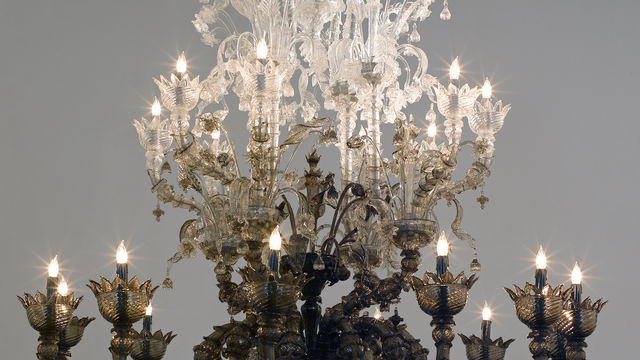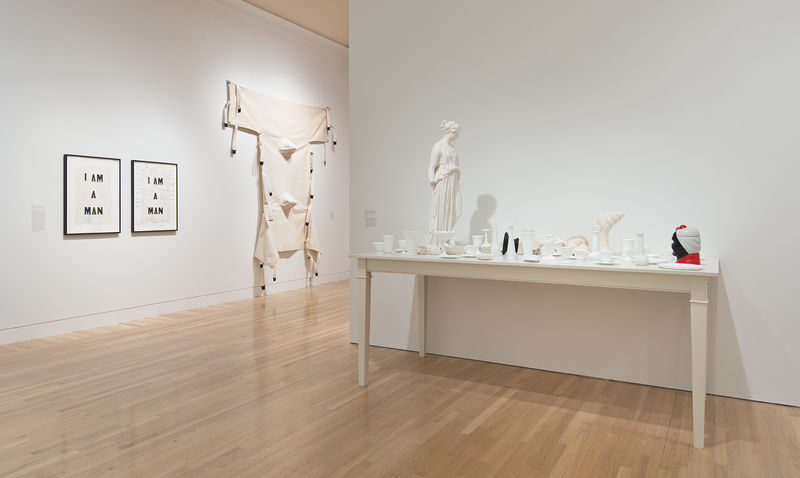
Fred Wilson
Fred Wilson reinterprets material objects to expose the cultural and racial hierarchies that subtend their acquisition, treatment, and display. Wilson's experiences as a black man living in America and working in the education departments of New York City museums "led [him] to question not only the artist's relationship to the museum but also how museums present information and how the cultural production of various peoples gets presented in very different ways."# In his artwork he has sought to draw attention to the role of museums and their visual and spatial rhetoric in constructing meaning. In the early 1990s he began working with museums' permanent collections to create site-specific installations that revealed institutional points of view and offered alternative narratives.# Part of a larger curatorial turn in conceptual artistic practice, Wilson's critical recontextualizations attend, in particular, to the representation of cultural difference, colonialism, and race.
Wilson, who has been referred to as a "Foucauldian archeologist," questions the "already-said" by using preexisting objects to reveal ingrained points of view and to explore "that which has heretofore escaped systematic analysis within a particular discursive domain."# He began to amass "black collectibles"—cookie jars, dolls, butter urns, and other objects featuring stereotypical images of African Americans—out of both disdain for these objects and a fascination with how they signify differently for different people.# Slit (1995) is a large-scale photographic portrait of a four-inch-tall wax figurine of a black-faced and red-lipped character gazing upward past the broken edge of his hat with round, doleful eyes. Wilson discovered the figurine at the Museum of Early Southern Decorative Arts in a stored box of dolls that were broken, damaged, or considered to be no longer appropriate for the museum's program. He singled out the image of the figurine—originally exhibited with twenty other photographs in a family tree–like arrangement (a lineage of racism and forgetting)—and enlarged it to reveal a crack along the figure's neck, a symbolic and chance embodiment of a real history.#

In 2003, while representing the United States at the Venice Biennale, Wilson began his trilogy of Murano glass chandeliers to examine the history and presence of Africans in Venice. Into the ornate forms of seventeenth-century Venetian chandeliers, he introduced unexpected emotions and narratives. To Die upon a Kiss (2011) evokes a transformative process through its title, which comes from Shakespeare's Othello, and its gradation of color. The deep black at the bottom leaches to an ethereal clear at the top, conjuring the dissolution of the body in death. While notably more open-ended than his earlier work, Wilson's recent work in glass generates stunning visual experiences of blackness, heightening our awareness of the myriad ways in which this color operates in society.#
—Ruth Erickson


